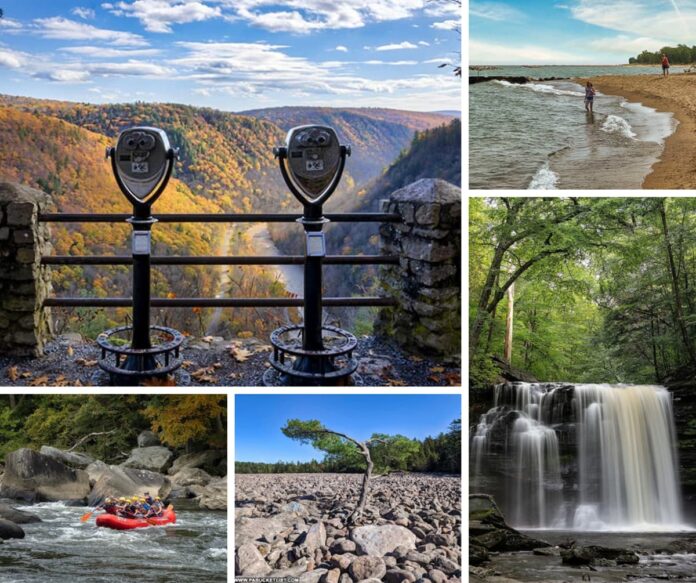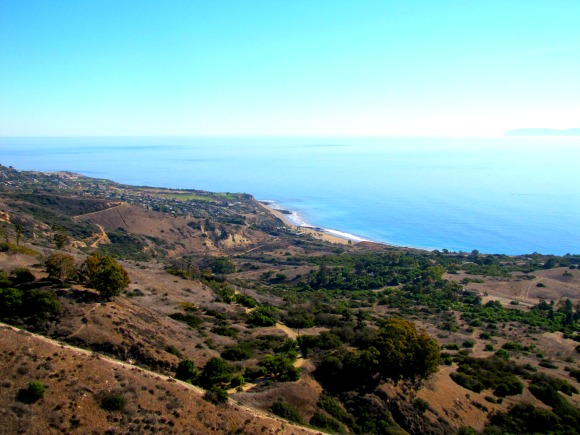


Explore Pennsylvania's National Parks: Tickets, Trails, Accessibility & Visitor Info
- ( 0 Reviews )
Contacts:
- ( 0 Reviews )
“
National Parks In Pennsylvania
Pennsylvania is home to a diverse array of national parks that offer visitors a unique blend of natural beauty, rich history, and recreational opportunities. From the historic Gettysburg National Military Park to the stunning landscapes of the Delaware Water Gap National Recreation Area, these parks attract tourists year-round. With entry fees typically around $10 per vehicle for day passes and various amenities available, including accessible trails and family-friendly activities, Pennsylvania’s national parks provide memorable experiences for all visitors.
Amenities
- Accessible parking and trails for wheelchair users
- Stroller-friendly paths for families
- Visitor centers with brochures and maps
- Guided tours and educational programs
- Canoe and equipment rentals
- Camping facilities with varying fees
- Junior ranger programs for children
- Scenic viewpoints and picnic areas
| Days | Opening Time | Closing Time |
|---|---|---|
| Monday – Thursday | 7:00 AM | 7:00 PM |
| Friday | 7:00 AM | 6:30 PM |
| Saturday – Sunday | 7:00 AM | 7:00 PM |
National Parks In Pennsylvania
Tourist Attraction
- Gettysburg National Military Park: A historic site that commemorates the Battle of Gettysburg, this park attracts visitors with its rich history and beautiful landscapes.
- Pennsylvania’s Laurel Highlands: Known for its stunning natural beauty, this area offers outdoor activities like hiking, skiing, and white-water rafting, making it a popular tourist destination.
- Delaware Water Gap National Recreation Area: This park features breathtaking views, waterfalls, and numerous recreational opportunities, drawing tourists year-round.
Point of Interest
- Allegheny National Forest: A vast forested area that provides a habitat for diverse wildlife and offers scenic trails for hiking and biking.
- Independence National Historical Park: Home to the Liberty Bell and Independence Hall, this park is a significant site for American history and attracts many visitors.
- Fort Necessity National Battlefield: This site marks the location of the first battle of the French and Indian War, providing insight into early American history.
Establishment
- Ohiopyle State Park: Established in 1973, this park is known for its white-water rafting and beautiful waterfalls, making it a favorite among outdoor enthusiasts.
- Ricketts Glen State Park: Established in 1942, it features stunning waterfalls and hiking trails, attracting nature lovers and hikers alike.
- Cook Forest State Park: Established in 1927, this park is famous for its old-growth forests and offers a variety of recreational activities for visitors.
Size of National Parks in Pennsylvania
The National Parks in Pennsylvania encompass approximately 70,000 acres of diverse landscapes. This vast area includes lush forests, scenic rivers, and breathtaking mountain views. Visitors can explore numerous trails and recreational activities throughout this expansive parkland.
Entry Fees for National Parks in Pennsylvania
Direct Fees
Direct fees are the charges that visitors pay upon entering the park. For example, the entry fee for the Delaware Water Gap National Recreation Area is approximately $10 per vehicle for a day pass. Annual passes are also available for around $35, allowing unlimited access throughout the year.
Indirect Fees
Indirect fees may include costs associated with park activities, such as guided tours or equipment rentals. For instance, canoe rentals in the Delaware Water Gap can range from $30 to $50 for a half-day rental, depending on the type of canoe and rental service.
Additional Fees
Some parks may charge additional fees for camping or special events. For example, camping fees in the parks can vary, with typical costs around $20 to $30 per night for a standard campsite, depending on the amenities provided.
Accessibility of Information on Wheelchair Access and Stroller-Friendly Paths in National Parks in Pennsylvania
- Park Overview: National Parks in Pennsylvania, particularly in the Bushkill area, are known for their natural beauty and diverse recreational opportunities.
- Wheelchair Access:
- Many trails are designed to accommodate wheelchair users, featuring smooth surfaces and gentle slopes.
- Accessible parking spaces are available near park entrances and popular attractions.
- Restroom facilities are equipped with accessible features, including grab bars and wider stalls.
- Stroller-Friendly Paths:
- Several paths within the park are stroller-friendly, allowing families to explore the area comfortably.
- Designated stroller routes are marked, ensuring safety and ease of navigation.
- Park maps often highlight stroller-accessible trails for visitor convenience.
- Information Availability:
- Visitor centers provide brochures and maps that detail accessible routes and facilities.
- Park websites offer online resources, including downloadable maps and accessibility information.
- Staff members are trained to assist visitors with specific accessibility needs and can provide guidance on the best routes.
- Programs and Services:
- Special programs may be available for individuals with disabilities, including guided tours and educational activities.
- Adaptive equipment rentals, such as all-terrain wheelchairs, may be offered at certain parks.
- Community Engagement:
- Local organizations often collaborate with the parks to improve accessibility and promote inclusive events.
- Feedback from visitors with disabilities is encouraged to enhance future accessibility efforts.
Natural Features of National Parks in Pennsylvania
- Pennsylvania is home to a diverse range of natural features, including stunning lakes, rivers, mountains, and lush forests, making it a prime destination for outdoor enthusiasts.
- The state boasts several national parks, such as Delaware Water Gap National Recreation Area, which features the scenic Delaware River, perfect for kayaking and tubing, as highlighted by visitors who enjoyed leisurely floats on its clean waters.
- Mount Tammany, part of the Appalachian Mountains, offers breathtaking hiking trails with lush greenery and panoramic views, making it a popular spot for both seasoned hikers and families.
- Visitors have praised the accessibility of trails like the one leading to Dingman Falls, where a well-maintained boardwalk allows easy access to the base of the falls, providing a beautiful backdrop for relaxation and exploration.
- Garvey Springs Orange Trail to Sunfish Pond is another highlight, featuring a moderate 1.4-mile trail that rewards hikers with stunning views of the pond and nearby waterfalls.
- The forests in Pennsylvania are rich with wildlife and provide ample opportunities for birdwatching, camping, and nature walks, as noted by families who participated in junior ranger activities, fostering a love for nature in children.
- While Pennsylvania does not have deserts, its varied terrain and ecosystems offer a unique blend of experiences, from serene lakes ideal for swimming to rugged mountain trails for adventurous hikes.
- Tourists can also find charming towns at the base of mountains, enhancing the experience with local culture and amenities, making it easy to enjoy a full day of outdoor activities.
- Overall, Pennsylvania’s national parks provide a rich tapestry of natural beauty, adventure, and family-friendly activities, ensuring memorable experiences for all visitors.
Flora and Fauna of National Parks in Pennsylvania
- Unique Plants and Trees: Pennsylvania’s national parks are home to diverse plant species, including the Eastern Hemlock, which is the state tree, and unique wildflowers like the Pink Lady’s Slipper and the Trillium.
- Wildlife Species: The parks boast a variety of wildlife, including white-tailed deer, black bears, and numerous bird species such as the Peregrine Falcon and the Eastern Bluebird.
- Scenic Trails: Visitors can enjoy stunning nature walks along accessible boardwalks, like the one leading to Dingman Falls, which features benches for resting and beautiful views of the falls.
- Family-Friendly Activities: Junior ranger programs engage children in exploration and learning, making it a memorable experience for families.
- Hiking Opportunities: Trails like the Garvey Springs Orange Trail offer moderate hikes with lush greenery and scenic views, perfect for outdoor enthusiasts.
- Water Activities: The clean rivers provide excellent opportunities for tubing and kayaking, making it a favorite spot for water activities.
- Accessibility: Many trails, such as the one to Dingman Falls, are designed to be accessible for all visitors, including those with mobility challenges.
Trails and Routes of National Parks in Pennsylvania
- Dingman Falls Trail:
– Distance: 0.30 miles
– Difficulty: Easy
– Features: Accessible boardwalk, benches for resting, scenic views of the falls.
– Note: Steep staircase to the top of the falls is not accessible. - Garvey Springs Orange Trail to Sunfish Pond:
– Distance: 1.4 miles
– Difficulty: Moderate
– Features: Lush greenery, beautiful pond views, and a waterfall. - Mt. Tammany:
– Distance: Varies (day-long hike)
– Difficulty: Moderate to Challenging
– Features: Scenic views, nearby quaint town, and opportunities for kayaking in the river. - Scenic Boardwalk Nature Walk:
– Distance: Varies
– Difficulty: Easy
– Features: Family-friendly, suitable for young children, and includes junior ranger activities. - Leisurely River Float:
– Distance: Varies
– Difficulty: Easy
– Features: Clean water for swimming, perfect for tubing and kayaking.
Nearby Landmarks of National Parks in Pennsylvania
- Dingman Falls: A stunning waterfall accessible via a 0.30-mile boardwalk trail, perfect for families and individuals with mobility challenges. Benches along the trail provide resting spots, and the base of the falls offers a picturesque view.
- Mt. Tammany: A popular hiking destination with lush greenery and breathtaking views. The nearby town adds charm, and kayaking opportunities in the river enhance the outdoor experience.
- Garvey Springs Orange Trail: A moderate 1.4-mile trail leading to Sunfish Pond, featuring beautiful scenery and a waterfall. The summit offers a serene view of the pond, making it a rewarding hike.
- Scenic Boardwalks: Enjoy nature walks along well-maintained boardwalks that provide easy access to the area’s natural beauty, suitable for all ages, including children.
- Leisurely River Activities: Experience tubing or kayaking in the clean, warm waters of the river, perfect for a relaxing day outdoors.
Recreational Facilities of National Parks in Pennsylvania
- Playgrounds: Many national parks in Pennsylvania feature playgrounds designed for children, providing a safe and fun environment for families to enjoy outdoor activities.
- Picnic Areas: Designated picnic areas are available, equipped with tables and grills, allowing visitors to enjoy meals surrounded by nature.
- Sports Fields: Some parks offer sports fields for activities like soccer and baseball, promoting physical fitness and community engagement.
- Scenic Trails: Trails such as the accessible boardwalk at Dingman Falls provide stunning views and opportunities for nature walks, suitable for all ages and abilities.
- Junior Ranger Programs: Engaging activities for children, like the junior ranger program, encourage exploration and learning about the environment.
- Water Activities: Parks near rivers offer kayaking, tubing, and swimming, with clean waters ideal for a refreshing day out.
- Rest Areas: Benches along trails provide resting spots for hikers, enhancing the overall experience of exploring the natural beauty.
- Accessibility: Many trails, such as the one to Dingman Falls, are designed to be accessible, ensuring everyone can enjoy the park’s offerings.
Activities in Pennsylvania’s National Parks
- Hiking: Explore a variety of trails ranging from easy boardwalks to moderate hikes, such as the 1.4-mile Garvey Springs Orange Trail, offering lush greenery and stunning views.
- Camping: Enjoy the great outdoors with camping facilities that provide a perfect base for adventure and relaxation amidst nature.
- Birdwatching: Experience diverse bird species in their natural habitats, making it a paradise for birdwatching enthusiasts.
- Boating: Kayak or float down clean, beautiful rivers, perfect for a leisurely day on the water, with options for swimming and enjoying the scenery.
- Cycling: Take advantage of scenic cycling routes that allow you to explore the parks at your own pace while enjoying the fresh air.
- Family Activities: Engage in junior ranger programs and nature walks that are fun and educational for children, fostering a love for the outdoors.
- Accessibility: Many trails, like the one to Dingman Falls, offer accessible options, ensuring everyone can enjoy the beauty of nature.
- Rest Areas: Benches and rest areas along trails provide opportunities to relax and take in the views, enhancing the overall experience.
Facilities of National Parks in Pennsylvania
- Restrooms: Basic restroom facilities are available, but visitors are advised to plan accordingly as they may not be fully equipped.
- Drinking Water: Drinking water stations are typically available, ensuring hydration during outdoor activities.
- Visitor Centers: Most parks feature visitor centers that provide information, maps, and educational exhibits about the local environment and wildlife.
- Food Options: While some parks may have snack bars or cafes, it’s recommended to bring your own food, especially for day-long hikes.
- Accessibility: Many trails, such as those leading to scenic spots, offer accessible paths, including boardwalks and benches for resting.
- Activities: Engaging activities like junior ranger programs and nature walks are available, making it a fun experience for families.
- Scenic Views: Trails often lead to breathtaking views, waterfalls, and opportunities for kayaking or tubing in clean, warm waters.
Rules and Regulations of National Parks in Pennsylvania
- Pet Policies: Pets are generally allowed in designated areas but must be leashed at all times. Owners are responsible for cleaning up after their pets.
- Smoking Areas: Smoking is prohibited in most areas of the parks to protect wildlife and maintain cleanliness. Designated smoking areas may be available.
- Camping Rules: Campsites must be reserved in advance. Campfires are allowed only in designated fire rings, and all food must be stored properly to avoid attracting wildlife.
- Trail Etiquette: Hikers should stay on marked trails, yield to those hiking uphill, and be mindful of other visitors. Benches are available along some trails for resting.
- Accessibility: Many trails, such as those leading to scenic spots like Dingman Falls, offer accessible routes with boardwalks and resting areas.
- Junior Ranger Programs: Engaging activities for children are available, encouraging exploration and learning about nature.
- Restroom Facilities: Basic restroom facilities are available, but visitors are advised to plan accordingly.
- Water Activities: Rivers and lakes in the parks are suitable for swimming and kayaking, with clean water and beautiful surroundings.
History of National Parks In Pennsylvania
The history of national parks in Pennsylvania is deeply intertwined with the state’s rich cultural heritage and natural beauty. The establishment of these parks reflects a growing appreciation for conservation and the preservation of natural landscapes, which began in the early 20th century.
Background on the Park’s Creation
Many of Pennsylvania’s national parks were created in response to the industrialization of the late 19th and early 20th centuries, which threatened the state’s natural resources. The establishment of parks like the Delaware Water Gap National Recreation Area aimed to protect the scenic beauty of the region while providing recreational opportunities for the public. The National Park Service, founded in 1916, played a crucial role in promoting the conservation of these areas.
Cultural Significance
Pennsylvania’s national parks are not only natural treasures but also cultural landmarks. For instance, Gettysburg National Military Park commemorates a pivotal moment in American history—the Battle of Gettysburg during the Civil War. This park serves as a reminder of the sacrifices made for freedom and unity, attracting visitors who seek to understand the historical significance of the site.
Historical Events
Throughout the years, various historical events have shaped the narrative of Pennsylvania’s national parks. The establishment of Fort Necessity National Battlefield marks the site of the first battle of the French and Indian War, providing insight into early American conflicts. These parks serve as educational resources, allowing visitors to engage with the past while enjoying the natural surroundings.
Visitor Experiences
Visitors to Pennsylvania’s national parks often share memorable experiences that highlight the parks’ beauty and accessibility. For example, families enjoy scenic nature walks along well-maintained boardwalks, such as the one leading to Dingman Falls, which is designed to accommodate all visitors, including those with mobility challenges. Engaging in junior ranger activities fosters a love for nature in children, making these parks a cherished destination for families.
Weather and Best Time to Visit National Parks in Pennsylvania
Pennsylvania’s national parks offer a diverse range of climates, making them ideal for various outdoor activities throughout the year. The state experiences four distinct seasons, with average temperatures ranging from the mid-30s °F (1-3 °C) in winter to the mid-80s °F (27-30 °C) in summer. Rainfall is fairly evenly distributed throughout the year, with spring and summer typically seeing the highest precipitation levels.
Seasonal Conditions
- Spring (March to May): Average temperatures range from 40-70 °F (4-21 °C). This season is characterized by blooming wildflowers and vibrant greenery, making it a picturesque time for hiking and nature walks.
- Summer (June to August): Average temperatures can reach 80-90 °F (27-32 °C). While summer is perfect for water activities and camping, visitors should be prepared for occasional thunderstorms.
- Fall (September to November): Average temperatures drop to 50-70 °F (10-21 °C). The fall foliage is breathtaking, attracting many visitors for scenic drives and hikes.
- Winter (December to February): Average temperatures can fall to 20-40 °F (-6 to 4 °C). Snow-covered landscapes offer opportunities for winter sports, though some trails may be less accessible.
Best Time to Visit
The optimal months for visiting Pennsylvania’s national parks are late spring (May) and early fall (September to October). During these times, the weather is generally mild, and the natural beauty is at its peak. Visitors can enjoy activities like hiking, kayaking, and exploring scenic trails, such as the accessible boardwalks at Dingman Falls, which provide stunning views and family-friendly experiences.
As noted by visitors, the parks offer memorable experiences, from nature walks to junior ranger activities, making them perfect for families and outdoor enthusiasts alike.
“


